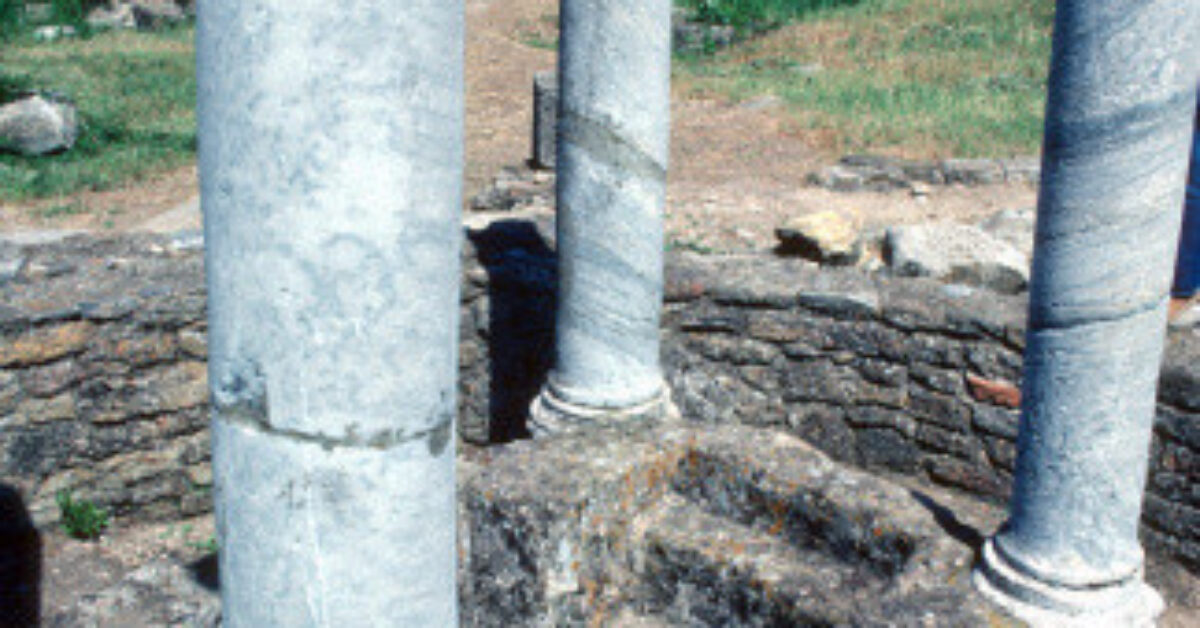Order of Christian Initiation of Adults: Prayers of the First Scrutiny
Last week we discussed the approaches to translating the texts of the Roman Catholic Latin rites of the catechumenate reflected in the Rite of Christian Initiation of Adults and in the new Order of Christian Initiation of Adults. This week we begin teasing out how those changes are reflected in the actual translations. Our first case study are the prayers of the First Scrutiny Rite on the 3rd Sunday in Lent. As I (Kent) noted in this blog several moons ago the orientation and purpose of the scrutinies in the modern RCIA is to allow the elect to renounce sin and evil and to make their profession of faith in the Triune God at their baptism. The scrutinies ritually express the turn from the lordship of sin, evil, and the devil and submission to the lordship of Jesus Christ. The scrutiny rites are structured according to this pattern:
- Readings from Series A (woman at the well, the man born blind, and the raising of Lazarus, seeking to illuminate the lives of the elect)
- Homily (which includes exploration of the meaning of the scrutiny)
- Silent prayer by the presider, sponsors, elect, and the assembly
- Intercessions for the elect
- Exorcism Prayer
- [Psalm/Hymn/Song]
- Dismissal of the elect
We will focus on the Exorcism Prayers. The Exorcism Prayers contain three parts: An initial prayer over all of the elect; individual silent prayer by the presider over each of the elect; a concluding prayer over all of the elect. I am going to focus this week on the first prayer of the exorcism prayers. In terms of the assessment of the prayers we should keep in mind two things. First, this Sunday through the Gospel reading focuses on Jesus’ encounter with the Samaritan woman at the well and her conversion to faith in the Messiah. Second, the primary orientations in terms of translation under the guidance of Comme le prévoit for the Rite of Christian Initiation of Adults and Liturgiam Authenticam for the Order of Christian Initiation of Adults. The former is “hearer-oriented” while being textually faithful. It wants the text to make sense for the hearer in that given linguistic context. The latter focuses on formal correspondence, translating the Latin as faithfully and literally as possible while creating a text that flows in the vernacular language in the rhythm of popular prayer.
Here are the two initial prayer texts from the Exorcism Prayer (RCIA first, OCIA second):
God of power, you sent your Son to be our Savior. Grant that these catechumens, who, like the woman of Samaria, thirst for living water, may turn to the Lord as they hear his word and acknowledge the sins and weaknesses that weigh them down. Protect them from vain reliance on self and defend them from the power of Satan. Free them from the spirit of deceit, so that, admitting the wrong they have done, they may attain purity of heart and advance on the way to salvation. We ask this through Christ our Lord. Amen (Rite of Christian Initiation of Adults, Liturgy Training Publications, 1988, 84).
O God, who sent your Son to us as Savior, grant that these elect, who desire to draw living water like the Samaritan woman and have been converted by the Word of the Lord, may acknowledge the hindrance of their own sins and weaknesses. Do not permit them, we pray, to rely on a vain confidence in themselves, and to be deceived by the power of the devil, but free them from the spirit of untruth, so that, recognizing their sinfulness, they may be cleansed inwardly and advance on the way of salvation. Through Christ our Lord. Amen (Order of Christian Initiation of Adults, The Liturgical Press, 2018, 116-117).
Note that both texts pray for the elect in light of the Samaritan woman’s encounter with Jesus. Thus, the prayer is intended to allow the elect to understand their own conversion to trust in Christ and his lordship from within the story of the Samaritan woman, to read their life in light of that story. How well does either prayer accomplish that? I’ll return to that at the end. In addition, note that the OCIA prayer is written in traditional collect fashion. It is one continuous prayer. The RCIA translation is written according to modern English syntax and oral patterns with shorter sentences and phrases, but still following the ancient collect structure.
Now let’s examine five different phrases in the two translations:
- “thirst for living water” versus “desire to draw living water.” The RCIA text expresses faith in more active vocabulary that reflects the Gospel narrative. The OCIA is more abstract.
- “turn to the Lord as they hear his word” versus “converted by the word of the Lord.” The RCIA text reflects the effective power of the Word through hearing it in the catechumenate as the means by which the Lord converts people. The active engagement with the oral word is lost in the OCIA version.
- “sins and weaknesses that weigh them down” versus “may acknowledge the hindrance of their own sins and weaknesses.” Weigh is much more evocative language than hindrance in conveying the effect of sin.
- “spirit of deceit” versus “the spirit of untruth.” Both of these phrases are effective but communicate differently. The RCIA focuses on how Satan’s lordship deceives the human. The OCIA focuses on how Satan’s lordship leads away from the truth in Christ.
- “attain purity of heart” versus “cleansed inwardly.” For a Lutheran, neither of these are possible in this life so the prayer would need to be adapted to reflect the striving for this in sanctification while acknowledging it is only realized in the eschaton. However, the RCIA language is yet more evocative. Envisioning what being cleansed inwardly looks like is challenging.
So, how well does either prayer facilitate the elect reading their lives in light of the Gospel reading? The evocative vocabulary and language reflective of modern English thought patterns and usage of the RCIA translation, allows the hearer to hear their life in light of the reading in deeper and more profound ways.

